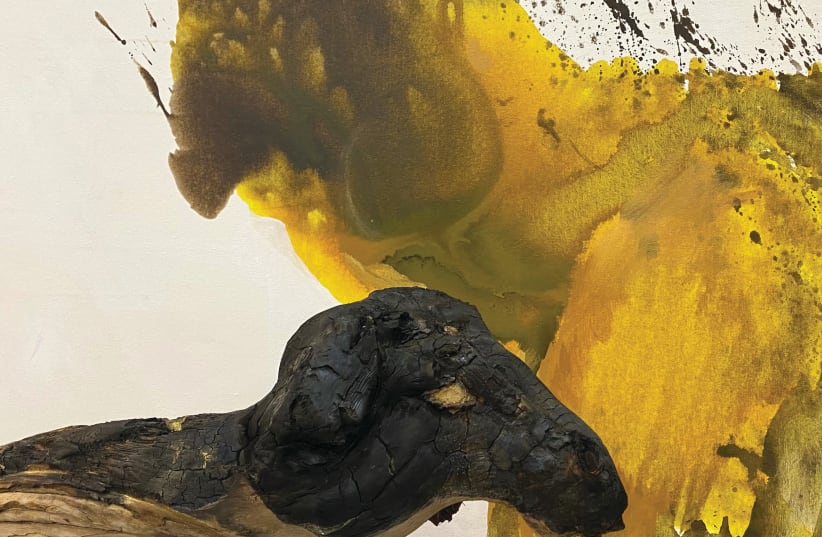“And the Lord called to Moses... saying, Speak to the children of Israel.... When one among you brings a korban to the Lord... the priest shall burn all on the altar, to be a burnt sacrifice, an offering made by fire” (Leviticus 1:1-9).
What is a burnt offering, and what are offerings?
The first communication to Moses after the Mishkan (Tabernacle) is completed is about korbanot (offerings). We wonder what that has to do with us today. The Hebrew word korban comes from karov, meaning “close.” In those days, the way the people strengthened their connection with God was through bringing sacrifices.
The first of the korbanot described by the Torah was the offering in which the animal was completely burned on the altar. In those days, animals were valuable. One purpose of the korbanot was kapparah (atonement). The person bringing the offering laid his hands on the animal and was meant to think, “If I have done something wrong, please let it be upon this animal instead of me.”
Nowadays we no longer have animal sacrifices. Yet the concept of sacrifice can still be meaningful. One way of relating to this concept is to define our losses as sacrifices. We still say “kapparah” when we suffer a financial loss or lose some material possession. We have a choice whether to simply mourn our loss or to give it to God.
One person who has done this is Yitzi Hurwitz, a Chabad rabbi in California, rendered immobile by ALS. Unable to speak or type, he uses his eyes to write heartfelt thoughts on the weekly Torah portion. He writes: “How do you get closer to God? By being a ‘burnt offering.’ While only parts of other sacrifices were burned on the altar, the burnt offering was entirely consumed. God wants us to give our total self to Him – to be open and vulnerable, and to allow our entire being to be consumed, to become one with Him.”
When a fire destroyed an art studio
ON THE night of Thanksgiving 2016, a fire raged through our rural county in the hills near Jerusalem. The entrance to our moshav was engulfed in flames. We grabbed whatever we could as we escaped with our lives. From the bottom of our hill, we looked up and saw Yoram Raanan’s 250-square-meter studio, overflowing with 40 years of paintings, explode with flammable materials, until it was totally consumed.
Raanan watched with a kind of wonder and disbelief. And I felt a sense of disbelief when I heard him say in a whisper, “Hakol l’tova [everything is for the good]” as hundreds and hundreds of paintings and other works of art, the offering of his soul, burned to the heart of heaven.
After the fire, I had a sense of kapparah. Kapparah, the studio burned and not us and not our home, our children, our grandchildren. Like a kind of kapparah, an atonement, this animal instead of me, the studio instead of us.
Raanan never mourned. I, on the other hand, did mourn certain amazing works of art, until my friend Sherri Mandell, whose son was brutally killed by Arab terrorists in 2001, put it into perspective for me. “It’s only things,” she said. Her book Blessings of a Broken Heart is her loss, courage, and faith as an offering to us.
After the fire, Raanan found a charred piece of wood that looked like the head of a ram. A knot in the wood, naturally filled with sand, was the ram’s eye. This found piece became to him a symbol of transformation and finding beauty even in destruction.
A few years later, in a moment of Zen-like letting go, he produced an expressionist painting of broad flame-colored strokes, with a smoky area reminiscent of a ram’s head. Finally, he elevated and transformed the piece of wood with iridescent gold and placed it in front of the painting. Notice the reflection of the ram’s head, the offering mirrored in its transformation as fire.
Since Oct. 7, we have been called on to make many kinds of offerings – money, food, financial and emotional support, pure kindness, nourishment for body and soul of the wounded and the bereaved – and prayer, which our sages say is a substitute for the sacrifices. Some people have seen their homes consumed by fire or shattered by bombs, their loved ones taken captive or fallen in battle as a “kapparah,” giving their lives up for all Israel.
May all those who have suffered losses be comforted, and may it finally be enough. ■
Meira Raanan is the author of Art of Revelation: A Visual Encounter with the Jewish Bible, a commentary on the paintings by her husband, Yoram Raanan. She also teaches Jewish meditation. Esther Cameron is a poet, scholar, and essayist living in Jerusalem. She is editor-in-chief of The Deronda Review.

